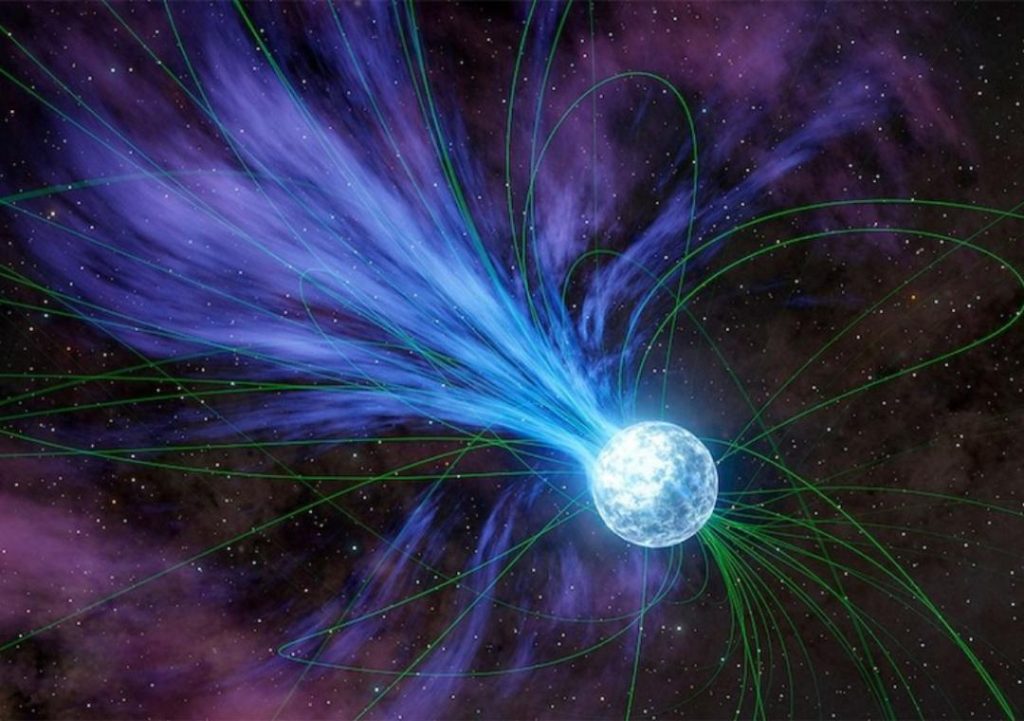
Gold & Platinum Created through Neutron Stars’ Explosions: Study
For centuries, humans have been fascinated by the origins of precious metals like gold and platinum. Where did they come from? How were they formed? These questions have puzzled scientists and treasure hunters alike, and now, a groundbreaking study has finally provided some answers. According to a study led by Columbia University student Anirudh Patel, magnetars or highly magnetized neutron stars played a crucial role in creating these elements in a cosmic event over 20 years ago.
For the uninitiated, magnetars are a type of neutron star that is characterized by its extremely strong magnetic field. These stars are born from the collapse of massive stars and are known for their intense energy releases, which can occur in the form of flares and bursts of radiation. In this study, researchers found that a magnetar’s explosion released flares that contained elements like gold and platinum.
The study, which was published in The Astrophysical Journal, suggests that these explosions happen approximately once per decade in the Milky Way galaxy and annually across the observable universe. This means that the formation of these precious metals is a relatively common occurrence in the cosmos.
So, how did the researchers come to this conclusion? To study the origins of gold and platinum, the team analyzed data from NASA’s Fermi Gamma-Ray Space Telescope, which has been monitoring the universe for gamma-ray bursts since 2008. By analyzing the data, they found that a burst of gamma radiation from a magnetar’s explosion in 1998 contained a signature of gold and platinum.
This discovery was made possible by the detection of a faint glow of gamma radiation in the vicinity of the explosion. This glow, known as a “prompt emission,” is thought to be caused by the interaction of the explosion’s energy with the surrounding environment. By analyzing the prompt emission, the researchers were able to detect the presence of gold and platinum.
The study’s lead author, Anirudh Patel, explained the significance of this discovery in an interview with NASA. “This is the first time we’ve been able to detect the presence of gold and platinum in a gamma-ray burst,” he said. “It’s a big deal because it answers a long-standing question about the origins of these elements.”
So, what does this mean for our understanding of the universe and the formation of precious metals? In short, it means that we can now pinpoint the origin of gold and platinum to a specific type of cosmic event: the explosion of a magnetar. This has significant implications for our understanding of the universe and the formation of heavy elements.
For centuries, scientists have been trying to understand how heavy elements like gold and platinum are formed. One popular theory is that they are formed through the process of nucleosynthesis, in which elements are created in the hearts of stars through nuclear reactions. However, this theory has been unable to fully explain the origins of these elements.
The study’s findings suggest that magnetars may play a crucial role in the formation of these elements. By exploding and releasing flares that contain gold and platinum, magnetars may be responsible for the creation of these precious metals.
In conclusion, the study of magnetars and their role in the formation of gold and platinum is a significant breakthrough in our understanding of the universe. By analyzing data from NASA’s Fermi Gamma-Ray Space Telescope, researchers were able to detect the presence of these elements in a gamma-ray burst. This discovery has significant implications for our understanding of the universe and the formation of heavy elements.






